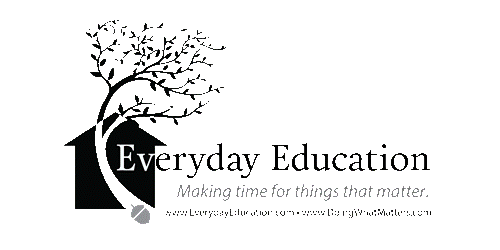
This 417 page ebook covers so many topics, everything from basic grammar to formatting formal papers. Honestly, when I saw how comprehensive the TOC was, my heart kind of skipped a beat. When I saw *this* in the contents, though, it flat-out stopped for a minute.
Parallel structure is the drum I beat more than any other! It is also the one to which I wonder if anyone is ever listening. I am so glad to see that someone, somewhere still wants to see it taught. I think that so many times someone is reading through something they have written and they can't quite figure out why it doesn't sound right. At least half the time that I am asked to review it (yes, people ask me to review their writing on a semi-regular basis), it's a parallel structure error.
Forgive my initial digression, but looking at the Table of Contents is the first thing I do whenever I get any new book, fiction or non-fiction. It was the TOC that immediately convinced me that this book was going to be one of my new best friends. This book doesn't just cover parallel structure, though. It covers everything. It begins with teaching a student how to set up an argument and construct a thesis (again, something which seems to be overlooked in some writing programs - why? Being able to articulate a thesis is at the heart of formal writing!), and then moves into organization and paragraph structure. It won my heart all over again with its discussion of transitions. Transitions. There's a concept, right? How many times have you read something either your student or someone else has written and thought, "Oh, wow. I guess we've moved on to point two/paragraph two/etc." A finely nuanced transition is a beautiful creature.
Mr. Johnston and Mrs. Campbell then spend a fair amount of time discussing how to write about literary works. Analyzing literary works is something that most students will begin in high school (hopefully!), but that few will be able to avoid in college. I was lucky enough to begin this activity in elementary school through a wonderful G/T program. My father taught me the fine arts of both writing and literary analysis at our kitchen table over the course of many, many nights. He would read what I had written, mark it up, explain the errors (parallel structure!), ask me to dig deeper (what did it symbolize when the wolves howled in The Wolves of Willoughby Chase?), and slowly but surely he (in conjunction with some amazing teachers) did two things: he created a writer and he created someone who loved literature and was able to analyze it effectively (in fact, just the other day someone asked me if my PhD was in literature. He said, "I just wondered because of the way you write emails." When your email writing skills are complimented, you know you have a love affair with the English language!).
Do I have a point here? Yes. This Handbook for Writers does everything that I was taught, and I have never found anything yet that does everything the way I was taught. I credit the fact that I can write well for my not having had to pay for school. Anything. All the way through a PhD. My father always told me that if you can write well, you can write your own ticket. He was right. You can be the most brilliant person around, but if you can't express your thoughts coherently and cohesively, it won't matter. No one will pay attention. You have to be able to corral your ideas into a concise thesis statement, whether you're applying for a scholarship or bringing an idea to your boss, and you have to be able to defend your points with evidence (hello, literary analysis - that skill *does* teach you something!). *This* handbook teaches you how to do everything you need to do to become an effective writer. It even has grammar lessons interspersed in case you missed that the first time around.
I believe in this book so much that I am going to begin using it with my sixth graders, along with my eighth grader. There is absolutely no reason to wait until high school (but definitely do still get it if you have a high school or college student - did I mention that Ian Johnston is a retired college professor? The man knows what he's talking about when he tells you how to write a paper! If I'm not mistaken, he also translated The Iliad, but I'll save my classical fangirling for another post!). The sooner you learn to write properly and well, the sooner it will simply become a habit. If you wait, you will have to break old (and bad) habits. It can (and should - and must!) be done, but how much easier it is to avoid the creation of such habits in the first place.
I really can't encourage the purchase of this book enough. It's more readable than Strunk and White. It's far more useful than A Pocket Style Manual. If there's a writing handbook, I own it. There is only one that I plan to hand to my children, though. It's this one.
Everyday Education provided the Crew with several different products to review, so be sure to click the banner below to read all about their experiences!




Did you know you can shorten your urls with Shortest and earn money for every visitor to your short urls.
ReplyDelete